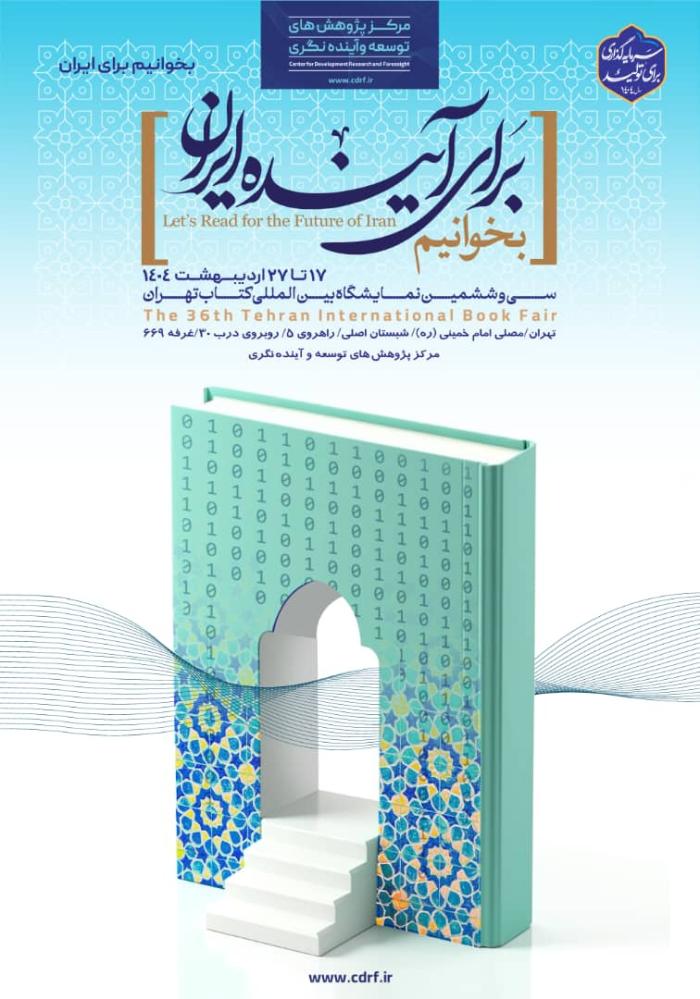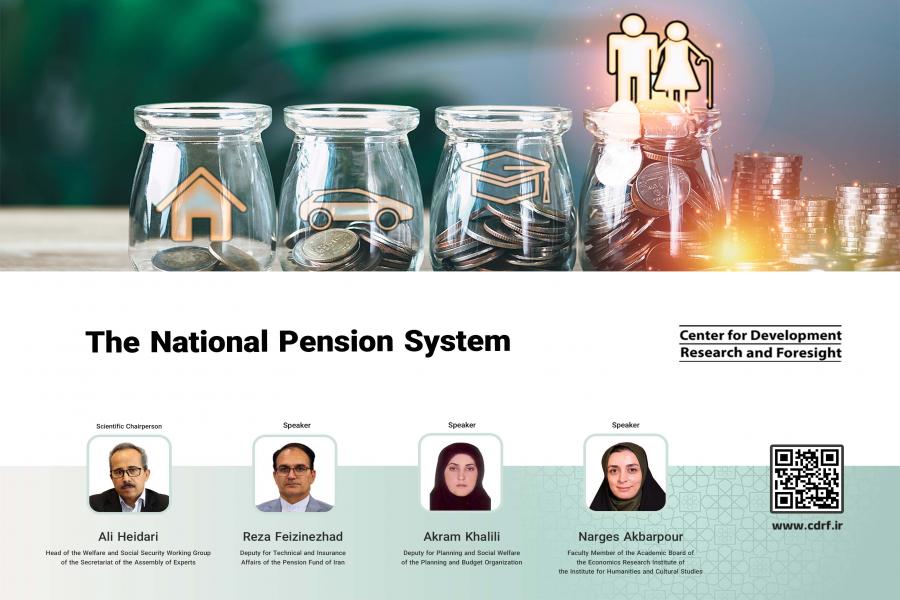

-
بررسی آییننامهها و دستورالعملهای برنامه هفتم پیشرفت
-
بررسی عوامل موثر بر افزایش تصادفات و تلفات جادهای و سوانح رانندگی و دادهکاوی تلفات انسانی
-
سازماندهی و بازآرایی فضایی آموزش عالی کشور
-
به روز رسانی سند ملی آمایش سرزمین
-
انجام مطالعات مناطق آزاد به عنوان نواحی پیشران اقتصادی کشور
-
اصلاح ساختار بودجه و پیاده سازی نظام یکپارچه مدیریت اطلاعات مالی دولت (IFMIS)

In the conference at the Center for Development Research and Foresight titled “Country’s Retirement System: Challenges and Policy Recommendations”, it is stated that Iran's retirement system is facing a number of challenges, including demographic changes, economic instability, and inadequate coverage for informal sector workers. The government is considering reforms to address these challenges, such as increasing the retirement age, limiting early retirement, and reducing the rate of pension accrual. However, some experts are concerned that these reforms may not be enough to save the system in the long run.
One of the biggest challenges facing Iran's retirement system is the fact that the number of retirees is growing faster than the number of workers. This is due to a number of factors, including an aging population and a declining birth rate. As a result, the ratio of workers to retirees is now at an unsustainable level.
Another challenge facing the system is economic instability. The Iranian economy has been hit hard by sanctions in recent years, and this has led to a decline in government revenues. As a result, the government has been less able to afford to make contributions to retirement funds.
In addition, many workers in Iran's informal sector are not covered by the retirement system. This means that they will not receive a pension when they retire. This is a major problem, as the informal sector is a large part of the Iranian economy.
The Iranian government is considering a number of reforms to address these challenges. One proposal is to increase the retirement age from 60 to 65. This would help to reduce the number of retirees who are receiving benefits from the system. Another proposal is to limit early retirement. Currently, many workers are able to retire before the age of 60. This reduces the amount of time that they have to contribute to the system.
The government is also considering reducing the rate of pension accrual. This means that retirees would receive a smaller pension each year. This would help to reduce the overall cost of the system.
However, some experts are concerned that these reforms may not be enough to save the system in the long run. They argue that more radical reforms are needed, such as creating a private pension system.
It is too early to say whether the Iranian government's reforms will be successful. However, it is clear that the retirement system is facing a number of serious challenges. If the government does not take action, the system could collapse in the future.



